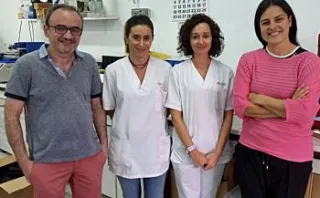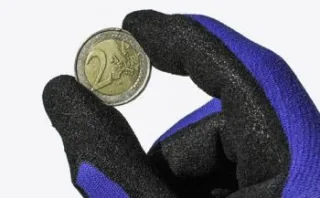News
How to wash anti-cut gloves made out of Dyneema®
An important number of the anti-cut gloves in Juba's catalogue are manufactured out of Dyneema® fibre. Used on armoured vehicles, bullet-proof vests, F1 seat belts, etc., this is the strongest fibre in the world.
As opposed to other work gloves, Juba gloves made with Dyneema® can be washed over and over without losing their properties, consequently saving your company money.
The Juba quality department has tested different gloves (4400, 4402, 4500, 4510 or 4520) in their laboratory coming to the conclusion that after 15 washes, the properties (abrasion, cut, tearing and perforation) of the gloves remain unchanged.
In the following graph provided by DSM (company that owns Dyneema®), we can see how this fibre behaves compared to other materials.
In a recent calculation by DSM based on average use of gloves with similar protection, users of anti-cut gloves manufactured out of Dyneema® can save up to 55% in their annual personal protective equipment bills.
This is due to the fact that Dyneema® is made with UHMWPE (Ultra-High Molecular Weight Polyethylene) and its main properties are not affected by water or detergents. The behaviour of these fibres does not vary (as for other materials) when they come into contact with aggressive chemicals used in manufacturing detergents such as sodium hydroxide and ammonia, hydrochloric acid, etc.
Dyneema® fibre's melting point is between 144ºC and 152ºC. However, it is difficult to reach these temperatures in the washing process for any piece of clothing.
We should never take Dyneema® over 90ºC, which is more than enough in most cases to get rid of the dirt.
To contrast their studies, DSM carried out 3 different washing processes as a test:
- Dry cleaning: gloves are dry cleaned using Perchlorethylene (PER) and then dried at 70ºC.
- Washing and drying in a drum: gloves are washed with water and detergent at 60ºC. Then they are rinsed with cold water and put in the drier at 55ºC
- Washing and drying in a drum at higher temperatures: in some industries such as the food industry, anti-cut gloves should demonstrate maximum hygiene by adapting to European standards. This test reaches temperatures of up to 95ºC.
Washing processes that are either dry or use water and detergent did not have a significant effect on the strength, cutting and abrasion of the gloves being tested. The adjustment, flexibility and comfort were not affected either.
However, although the Dyneema® fibre demonstrates great behaviour in terms of washing, we cannot say the same about other fibres used in anti-cut gloves. The structure and properties of cotton, elastane or polyamide might be modified when in contact with detergents or when exposed to high temperatures.
Ask one of our specialists if you have any questions on how to wash anti-cut gloves and start saving money now.
28 July 2017
Read more


















